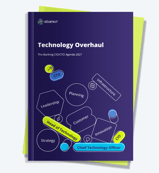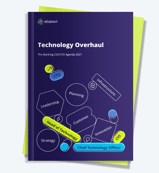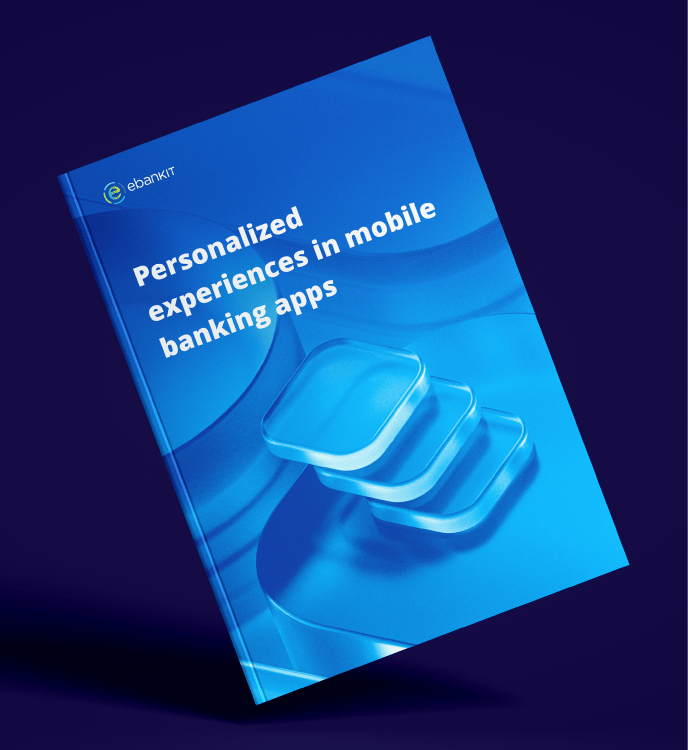The digital transformation journey of Metropolitan Commercial Bank
Recorded on June 12, 2025
![]()
![]()
SPEAKERS
SUMMARY
Metropolitan Commercial Bank's Chief Operating Officer, Dixiana Berrios, shared insights from their award-winning modernization journey and innovative approach to transforming commercial banking in the U.S. Discover their strategies for digital transformation, innovation, and customer-centric growth.
Key topics
Discover why Metropolitan Commercial Bank broke away from traditional U.S. banking technology providers, opting instead for a best-of-breed, API-first global tech stack.
Rather than replicating legacy processes, MCB reimagined its services around its clients' needs, ensuring a modern and tailored new digital experience.
MCB focused on building a scalable, right-sized solution tailored to its growth goals. The transformation was guided by a clear vision: to serve affluent segments with precision and agility.
Transcript
00:00:00 - Introduction
In the opening minutes of the ebankIT Summit session, the host warmly welcomed the audience and expressed excitement about the fireside chat, highlighting the event’s focus on innovation, AI, and digital transformation. The speaker reflected on the previous summit, where ebankIT had shared its aspirations for expanding into the U.S. market.
A key milestone mentioned was the goal of having a U.S. bank attend the next summit, an objective now realized with the presence of representatives from Metropolitan Commercial Bank in New York City, including Dixiana Berrios, Jean-Philippe Gerbi, and Vinko Zulj.
Dixie, the Chief Operating Officer of Metropolitan Commercial Bank, introduced herself by sharing her extensive 30-year career in U.S. commercial banking, including five years at Metropolitan. She provided a brief history of the bank, which was founded in 1999 and remains led by one of its original founders. The bank primarily focuses on commercial lending but also engages in higher-risk deposit verticals.
The conversation then shifted to Metropolitan’s digital transformation journey. Dixie proudly announced that the bank had recently won a U.S. Bank Tech Award for the best omnichannel onboarding solution, setting a high benchmark for future innovation.
She elaborated on the motivations behind the bank’s modernization efforts, which began when she joined and discovered that their technology stack was outdated, akin to something from 1985.
With support from CIO John Philippe, the bank embarked on a mission to overhaul its core systems. The legacy infrastructure, originally designed, was no longer suitable for the sophisticated clientele they aimed to serve.
The outdated systems created operational inefficiencies and hindered customer experience. Recognizing the need for an API-first, scalable technology stack, the bank committed to a transformation that would support both current and future client needs.
This journey, now two and a half years in the making, has been focused on finding best-of-breed solutions to align their tech capabilities with their entrepreneurial spirit and competitive market demands.
00:10:00 - A "best-of-breed" approach
In the next segment of the session, Dixie explained how Metropolitan Commercial Bank deliberately chose a different path from most U.S. community banks when it came to selecting technology providers. While many banks typically rely on major legacy vendors like Fiserv, FIS, or Jack Henry, Metropolitan opted for a “best-of-breed” approach. They were open to exploring fintech solutions, partly because they already served fintech clients and understood the value of innovation. This global search for the right technology partners was driven by a desire to build a modern, flexible infrastructure that could support the bank’s long-term goals.
The conversation then shifted to the human side of digital transformation. The moderator emphasized that while technology is crucial, people are equally important—especially when legacy mindsets can be just as limiting as legacy systems. Dixie agreed and described how Metropolitan tackled this challenge by launching a comprehensive internal and external communication strategy. Internally, they reassured staff that the transformation was not about job cuts but about empowering employees to improve their roles. Staff were encouraged to share ideas, identify inefficiencies, and help redesign processes rather than simply replicate old ones in new systems.
To support this cultural shift, the bank created an internal intranet for updates, held regular team meetings, and developed personalized communication tools for account officers to keep clients informed. Employees were not only kept in the loop but were also given a voice in shaping the transformation. Their feedback—especially from client-facing roles—was instrumental in identifying pain points and designing better solutions. This inclusive approach helped foster a sense of ownership and enthusiasm among staff, making them champions of the bank’s modernization journey.
00:15:00 - Key learnings from this digital transformation
In the final part of the ebankIT Summit session, Dixie reflected on Metropolitan Commercial Bank’s two-and-a-half-year digital transformation journey, acknowledging that while it feels much longer, it has been rich with learning. One of the most significant lessons was the importance of establishing a strong governance framework from the outset. Initially, the team underestimated the depth of governance needed, but quickly realized that maintaining momentum and transparency required rigorous oversight.
They implemented a structured model involving executive meetings, team meetings, weekly risk-action (RAID) sessions, and consistent updates to the board. This helped ensure alignment, accountability, and visibility across all levels of the organization.
Dixie emphasized that while the current transformation program has a defined endpoint, innovation itself is continuous. The bank doesn’t see modernization as a one-time effort but as an ongoing evolution, with future iterations and enhancements expected as technology and customer expectations evolve. This mindset of perpetual improvement has been embedded into the culture of the organization, even while the current project is still underway.
In closing, Dixie offered advice to other financial institutions considering similar journeys. She encouraged openness to non-traditional providers and fintechs, rather than relying solely on legacy vendors.
She stressed the importance of aligning technology decisions with the bank’s strategic vision and customer base, cautioning against overbuilding solutions that don’t fit the institution’s goals.
A key takeaway was the need to deeply understand and design around customer journeys, rather than simply accepting off-the-shelf solutions. Metropolitan’s success has come from knowing its market—middle-market and affluent clients—and tailoring its transformation to meet their specific needs.
The session concluded with appreciation for the partnership and a hopeful look toward future collaborations and continued innovation.




%20without%20SAM%20-%20Maturity%20Level%20-%202-KO%20edit.webp?width=160&height=57&name=67768-ebankIT%20Platform%20-%20CMMI%20Development%20V2.0%20(CMMI-DEV)%20without%20SAM%20-%20Maturity%20Level%20-%202-KO%20edit.webp)
